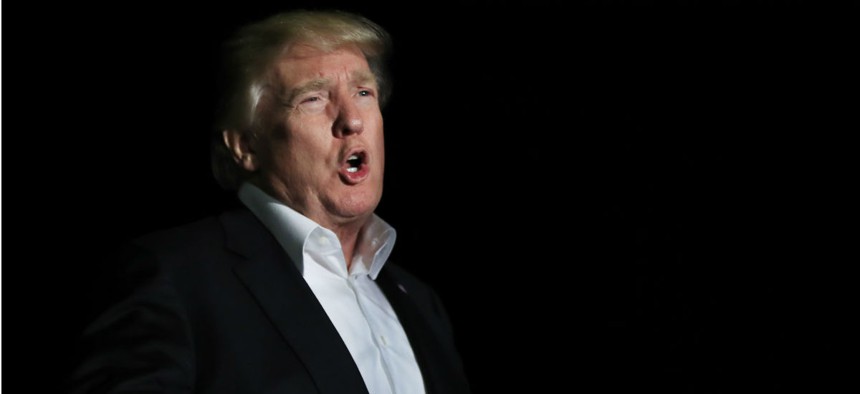Trump’s Deregulatory Efforts Are Ensuring Agencies 'Stay Within the Laws,' Officials Say
President cancels speech after mass shooting; administration says it has saved $300 million from reform efforts.
The Trump administration boasted on Monday of its accomplishments in eliminating regulations enforced by federal agencies, saying it is exceeding its goal to slash two rules for every new one it creates.
President Trump did not make a public speech as scheduled, due to the mass shooting in Las Vegas that left more than 50 dead and hundreds injured. Instead, Vice President Mike Pence privately spoke before the group that had come to the White House to hear Trump. An administration official said the address would highlight the president’s approach to regulatory reform, how agencies would work hard to accomplish the president’s directives, and the differences the directives were making on economic growth and job creation.
The administration has so far finalized 10 deregulatory actions and created just four new regulations, Office of Information and Regulatory Affairs Administrator Neomi Rao told reporters in advance of the speech. That has led to $300 million in annualized cost savings, Rao said, declining to elaborate on how the administration reached that figure other than to say it was based on what career staff presented to her. Rao said the administration’s deregulatory efforts were a key part of “restoring a more constitutional government.”
“We are working with agencies to make sure they stay within the laws enacted by Congress,” Rao said. Where agencies have the latitude under existing laws to issue new regulations, she added, OIRA will ensure they “follow presidential priorities.”
Ten federal agencies hosted events Monday to discuss their regulatory reform efforts. Those sessions were held to solicit input from stakeholders on which regulations were hampering growth and innovation in their communities. The 10 agencies were the departments of Agriculture, Commerce, Education, Energy, Health and Human Services, Interior, Labor, Transportation and Treasury, as well as the Small Business Administration.
Trump has signed multiple executive orders to reduce federal agencies’ regulatory authority; one requires agencies to slash or streamline two existing regulations for every new one they create, while another created task forces at each agency to identify rules for elimination. That process is taking place across government. The Trump administration is being sued for its one in, two out executive order, while Democrats have raised concerns about the lack of transparency surrounding the agency task forces.
Critics of Trump’s regulatory policies have said the administration is placing all of its focus on the costs of regulations without considering the benefits, but an administration official disagreed.
“We are trying to be as rigorous as possible,” the official said. “If there are regulations on the books with large benefits, they are not something we are looking to roll back.”
While the administration has actually finalized few deregulatory actions, the Competitive Enterprise Institute said the Trump team's new direction is already clear. The Federal Register currently sits at around 46,000 pages, compared to nearly 68,000 pages at the same time last year—a 32 percent reduction. The Trump administration issued just 116 “significant” rules—those with an economic impact of at least $100 million—by Sept. 30, a 57 percent reduction from the Obama administration over the same period last year, CEI found in its report.
In a July report, OIRA said agencies had withdrawn 469 actions proposed by the Obama administration and delayed an additional 391. Amit Narang, a regulatory policy advocate with Public Citizen and a critic of Trump’s approach to regulatory reform, said the only winners in that report were “the corporate interests whose deregulatory wish lists the administration has adopted wholesale.”
NEXT STORY: Innovation By and For the Government




